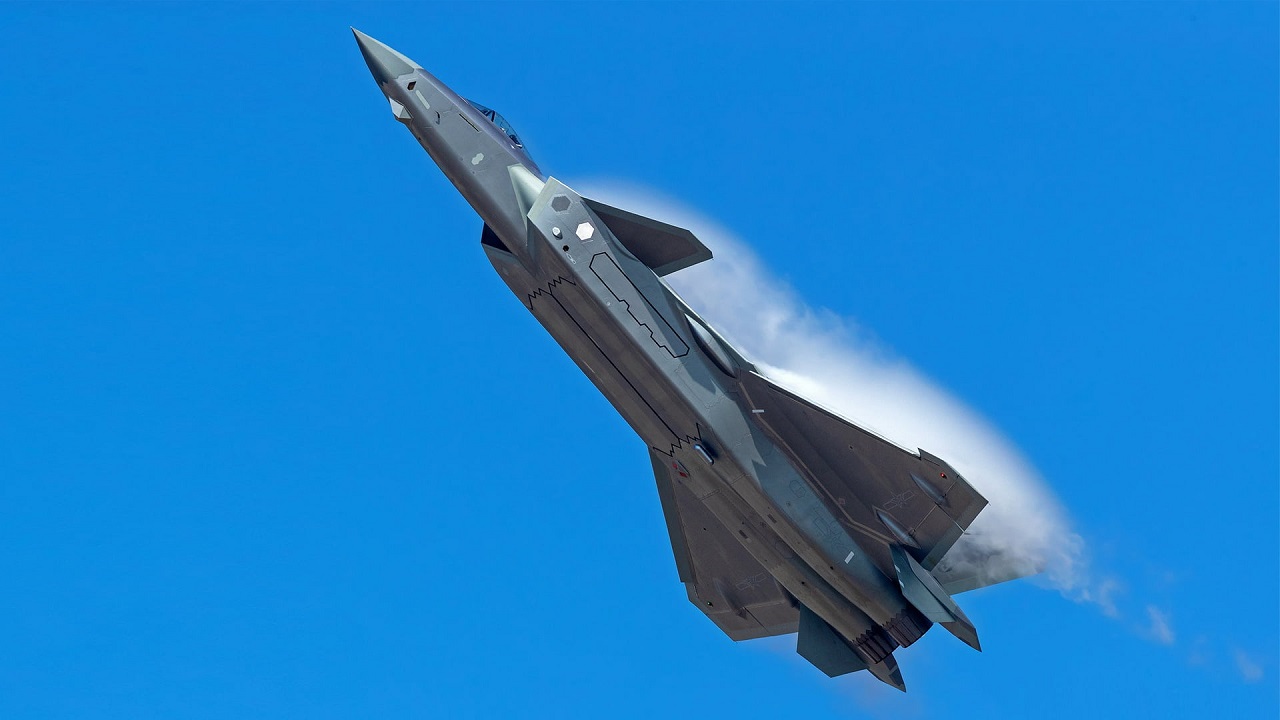The U.S. military benefited from having air superiority over its adversaries for decades. Introducing the world’s first fifth-generation stealth fighter the F-22 Raptor and the world’s first low-observable B-2 strategic bomber, America’s aerial arsenal was truly unmatched for many years. When Russia and China began developing their respective fighter programs, however, this changed. The F-22 is no longer the only fifth-generation stealth fighter in the skies. Russia’s Su-57 and China’s Chengdu J-20 are currently in service, posing direct threats to America’s once-stealth fighter advantage. While Moscow’s Su-57 is widely considered to be the least stealthy of the four fifth-generation airframes in production across the globe today, Beijing’s J-20 has some aviation buffs and industry experts worried.
The F-22 was the leader in the skies for years
Back in the 1980’s, the need for a next-generation fighter capable of fixing the U.S. Air Force’s potential to operate at a mission deficiency arose. Around this time, American officials were aware that top adversaries Russia and China were beginning to expand their respective fighter programs. The introduction of the Raptor gave the U.S. Air Force a huge advantage. The fighter’s supermaneuverable flight characteristics, including a small radar cross-section and twin thrust-vectoring F119 turbofan engines allowed the airframe to fly undetected and gave it the ability to outperform any other fighter in a dogfight.
Once the Cold War dissipated and the Soviet Union ceased to exist, the desire to maintain production of the expensive F-22 platform dwindled. In the early 2000’s, the U.S. shifted focus to the emerging War on Terror and the development of the cheaper F-35 Joint Strike Fighter program cut the Raptor’s production. Initially, the Air Force planned to purchase a total of 750 F-22s, but the program was ultimately cut to 187 jets by 2009.
Moscow and Beijing have developed their own fifth-gen fighters
Around this time, Beijing was expanding development on its J-20 “Mighty Dragon” fighter. The J-20’s chief designer has claimed that the fifth-generation airframe will be upgraded with artificial intelligence and other advanced technologies over the next decade. According to Yang Wei, the Aviation Industry Corporation of China has designed the J-20 to lead the PLAAF’s offensive operations in potential conflicts over Taiwan or to safeguard island assets in the South and East China Seas. Yang Wei elaborated that the J-20 will possess ‘air-space integration,” allowing it to work alongside other Chinese airframes. This capability, according to Wei, will give the J-20 an edge over its American F-22 Raptor and F-35 Joint Strike Fighter counterparts.
The U.S. Air Force’s NGAD program is underway
The U.S. Air Force is also designing a next-generation fighter capable of flying dual missions with a fleet of sophisticated unmanned aerial vehicles (UAVs). Earlier this year, Air Force Secretary Frank Kendall stated that roughly 1,000 collaborative combat aircraft (CCAs) are set to accompany the 200 next-generation fighters expected to fly in the service’s Next Generation Air Dominance program. These drone wingmen will elevate America’s aerial capabilities and range, which officials are hoping will be enough to strongarm China’s Air Force.
The NGAD future fleet is projected to start production in the 2030’s. As tensions between Beijing and Washington continue to ramp up, the need for a next-generation fighter program is essential to maintain America’s aerial formidability.
Maya Carlin, a Senior Editor for 19FortyFive, is an analyst with the Center for Security Policy and a former Anna Sobol Levy Fellow at IDC Herzliya in Israel. She has by-lines in many publications, including The National Interest, Jerusalem Post, and Times of Israel. You can follow her on Twitter: @MayaCarlin.
From 19FortyFive
A Russian Submarine Accidently ‘Destroyed Itself’
Total Massacre’: Ukraine Footage Shows Russian Cruise Missile Shipment Attacked

